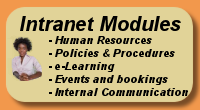Transvaal Museum
Pretoria
South Africa
Attractions in Pretoria
The Transvaal Museum is a natural history museum situated in Pretoria, South Africa.
It was founded as the Staatsmuseum (Afrikaans for "State Museum") of the ZAR on the 1 December 1892.
The Transvaal Museum was amalgamated with the Pretoria-based National Cultural History Museum (also called the African Window) and the South African National Museum for Military History (situated in Johannesburg) on 1 April 1999 to form the Northern Flagship Institution. The Institution is managed by a chief executive officer and a board, which replaced the three separate previous museum boards.
The collecting policy of the Museum covered cultural history and natural history. To expand the collection two circulars were distributed to officials of the Zuid-Afrikaansche Republiek to ask for assistance in obtaining:
1: “Items made by the indigenous inhabitants so as to build up a collection of their artefacts”
2: “Items of interest in the field of natural history, including animals, plants, fossils, minerals and ores”
3: “Items of European origin and history, in particular those of the Boers and the Voortrekkers”
Genesis I: Hall of Life
This is the first of the main halls upstairs, depicting the history of life on earth. It is designed in such a way that it gives a time-based history of the development of animal life on earth, from its earliest beginnings to its present diversity. There are models of primitive animals such as Protozoa, hydra and sea-anemones as well as tape-worms, nematodes and earth worms, molluscs, insects and spiders. There are displays of sharks and bony fish, including the coelacanth that was caught in 1938 off East London in the Eastern Cape. The Genesis I Hall ends with displays on amphibians and reptiles.
Genesis II: Mammal Hall
This hall is all about mammals and their evolutionary history. Included are displays of mammal-like reptiles and dinosaurs. The world famous mammal-like reptiles lived in southern Africa about 270 to 170 million years ago. Displays of early hominids (Australopithecus) and Mrs Ples can also be seen in here. Just before you leave the Mammal Hall, there is a display of the toothed and baleen whales to which dolphins also belong. All these models are 1/10 of their actual size.
Austin Roberts Bird Hall
This hall was named after Dr Austin Roberts who worked as an ornithologist at the Transvaal Museum from 1910 to 1948. On the mezzanine floor there is a display of nearly 870 of southern Africa's birds, numerically arranged according to Roberts' Birds of Southern Africa to commemorate his work.
GeoScience Museum
This museum exhibits a comprehensive collection of materials, precious and semi-precious stones. Although linked to the Transvaal Museum, these displays are provided by the Council of GeoScience.
General Information:
The museum is open every day
from 8:00 - 4:00
(except Christmas Day & Good Friday)
Entrance Fees are payable, prices upon request.
Conducted tour or programme : additional charge per person
Tour of Research Departments : additional charge per person
School / Tour groups: For every 30 learners / tourist, one teacher / leader free.
Discovery centre
Charge per person + Entrance Fee (Groups in the mornings & individuals in the afternoon).
Special tariff for all ages visiting Discovery Centre and Transvaal Museum : Charge per person
Night Tours
Night Tour for learners: fee per person
Night Tour for family groups: charge per person
Behind the Scenes tour of Research Departments
Charge per person + Entrance Fee
Broom Room/ Paleontology: charge per person (Overseas visitors)and charge per person (South African Citizens)
Science Magic Show
Fee per person
If there are any queries regarding the above, please phone 012 322 7632.
Address:
PAUL KRUGER STREET
PO BOX 413, PRETORIA
SOUTH AFRICA
0001
TEL: 27 12 322-7632
FAX: 27 12 322-7939
The Police Museum dates back to 1932 when the SAP College, a depot at that time, started it on a small scale. The items on display mainly included instruments used in the commission of crime, exhibits in important and sensational criminal cases and other items connected with crime. The museum mainly served as an aid in the training of police students.
The Police Museum was officially opened on 23 September 1968 and is currently housed in the Compol Building. The displays were initially not augmented and the curator and his personnel devoted all their time to collecting items of historical value.
The crime section depicted various types of crime without overplaying the sensational aspect of crime. This section rather focused on education and were augmented by striking and interesting illustrations. The second section depicted the various phases of the police force’s growth and development over numerous decades. Over a period of almost 71 years, not only the appearance of police officials, but also their work situation, resources and techniques of crime investigation had changed considerably. Although the third section that dealt with “terrorism” was not entirely completed, it was also opened to the public. The exhibitions filled two entire floors of the Compol Building and immediately proved to be a popular tourist attraction.
International Museum Day is celebrated annually on 18 May. The Police Museum arranged the celebrations for Museum Day in 1995. The staff of the Police Museum, the National Museum of Cultural History, Melrose House, the Pretoria Art Museum and the Transvaal Museum participated in a procession through the streets of Pretoria and the public was allowed free entrance to these museums. The Police Museum conducted a night tour which coincided with the opening of new displays. The tour formed part of the Restructuring and Development Programme and was attended by Mr Tokyo Sexwale, the then Premier of Gauteng.
Where: Pretorius and Shubert str Pretoria | 
